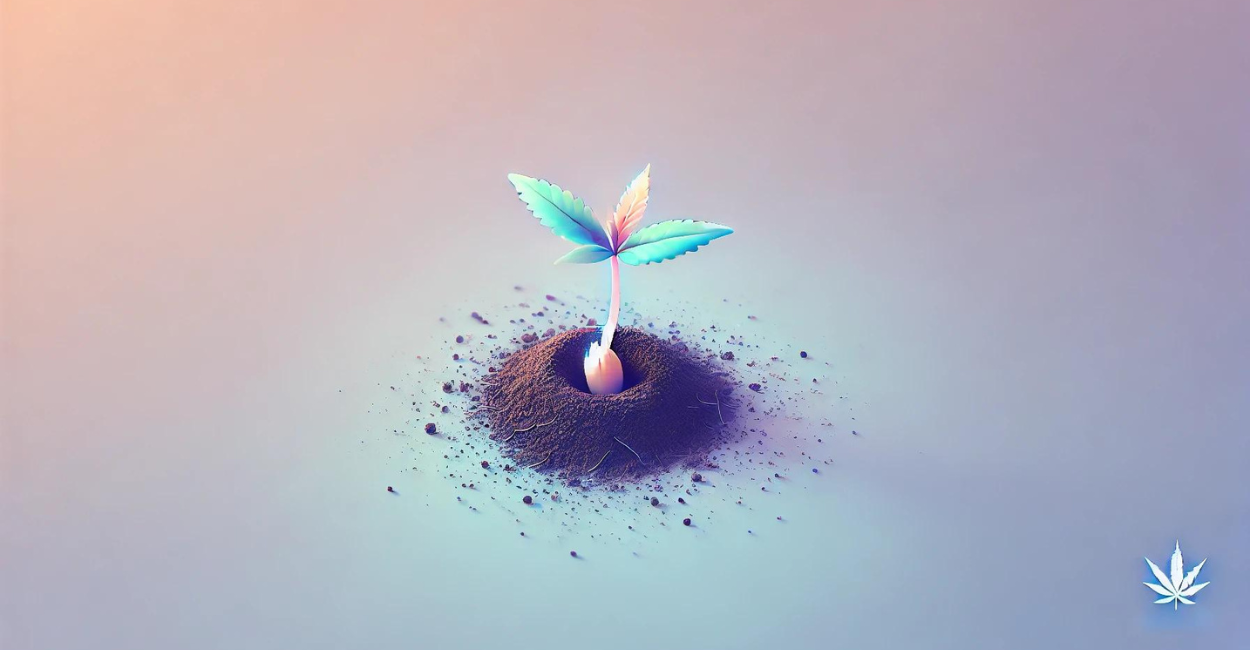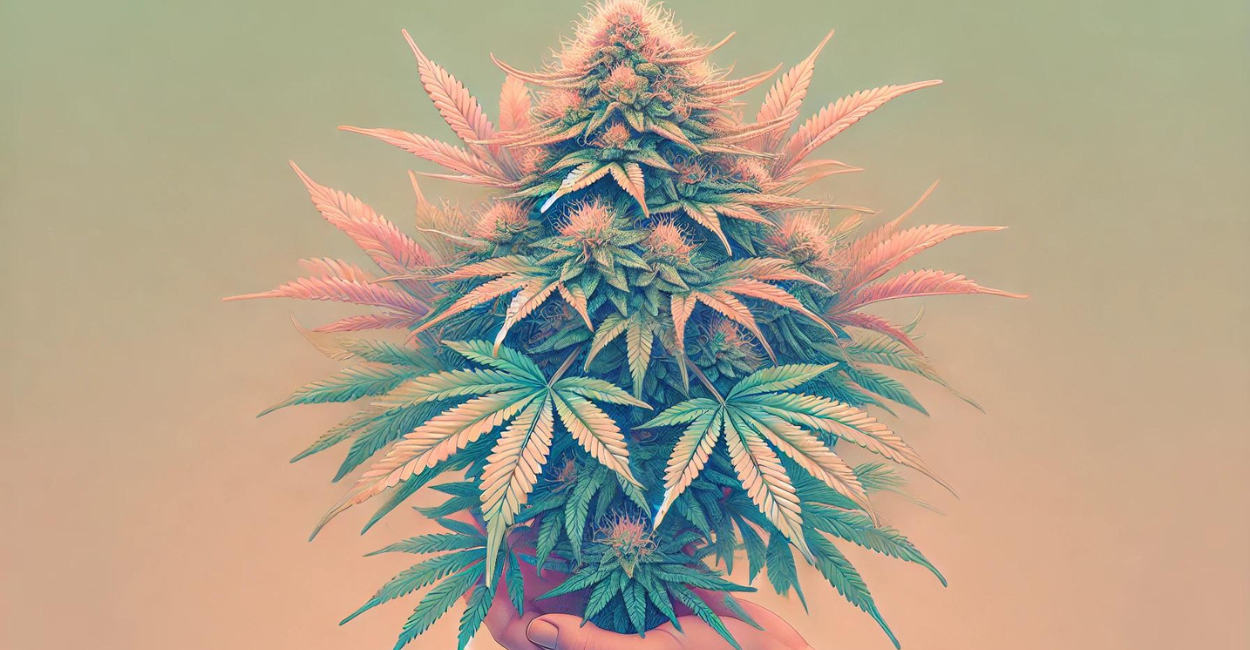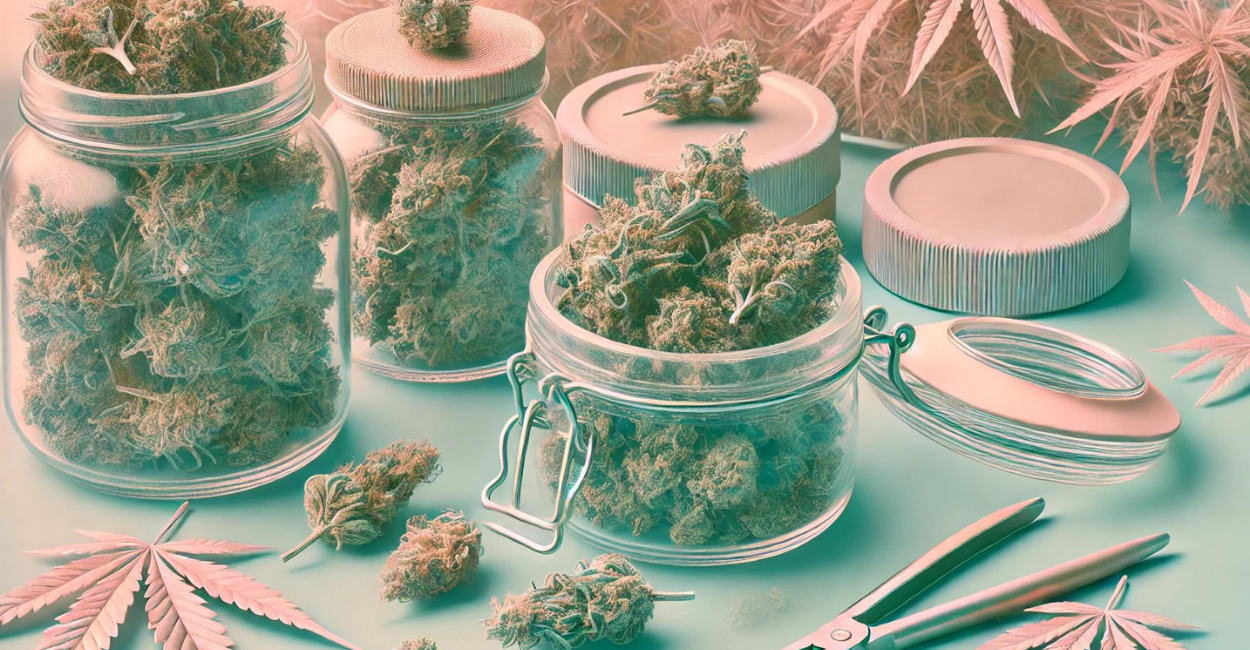Reading time: 5-7 minutes
Growing cannabis is more than just a science – it's an art that requires patience, dedication, and above all, a deep understanding of natural growth processes. Successfully navigate the individual Growing Stages of Cannabis – from germination to harvest. Ideal for growers aiming to get the most out of their plants.
Table of Contents
- 1. Germination
- 2. Seedling Stage
- 3. Vegetative Stage
- 4. Flowering Stage
- 5. Harvesting
- 6. Post-Harvest
- Conclusion
Now that you have an overview of the different phases of cannabis growth, let’s dive deeper into each one. From the initial germination to the final harvest, the following sections will provide you with everything you need to know to optimally care for your plants and achieve a bountiful yield.
1. Germination
Germination is the first step in the cannabis growth phases. During this phase, the seed begins to sprout and develop a root (taproot). This is the crucial moment when the cannabis plant comes to life and lays the foundation for all subsequent cannabis growth phases.
Duration: 1-7 days
The seed requires warmth, moisture, and darkness to germinate. Once the root has developed, the seedling breaks through the seed shell and begins to grow. It’s important to maintain consistent temperature and humidity during this phase. Keep the seeds in a warm, moist environment. A common approach is using the paper towel method, where seeds are placed between moist paper towels until they germinate. Additionally, good air filtration should be in place to optimize air quality and prevent mold growth.
Ensure that the ambient temperature is between 20-25°C and keep the seeds consistently moist, but not wet. Continuous air circulation helps maximize the germination rate.

2. Seedling Stage
In the seedling stage, the cannabis plant develops its first true leaves, the characteristic fan-shaped leaves associated with cannabis. This phase is one of the most delicate cannabis growth phases as the plant is still very young and vulnerable.
Duration: 2-3 weeks
During this phase, the plant requires a lot of light and consistent care to promote healthy root and leaf growth. It’s important to use a consistent light source that supports the growth of the young plant without overwhelming it. Provide the seedlings with 18-24 hours of light per day and ensure the substrate remains slightly moist. Use soft, nutrient-poor water. Good air circulation helps protect the delicate plants from mold and disease.
Avoid overwatering, as the young roots can easily rot. Ensure the seedlings are not too close to the light source to avoid burns. Air filtration systems can also be helpful here to keep pollutants and moisture under control.

3. Vegetative Stage
The vegetative stage is one of the longest cannabis growth phases. During this time, the plant grows vigorously and develops many leaves and a strong root system. This phase lays the foundation for a strong and productive flowering stage.
Duration: 3-16 weeks (depending on the strain)
In this phase, the plant focuses on the growth of leaves, stems, and roots. The plant now requires plenty of nutrients, especially nitrogen, to grow healthy and strong. Balanced humidity and temperature control are crucial for growth. Ensure the plant receives 18-24 hours of light per day and increase the nitrogen content in the nutrient mix. Humidity should be between 40-70%. Good air circulation prevents moisture buildup and mold growth.
Use training techniques such as LST (Low Stress Training) or Topping to control growth and maximize yield. Ensure the plant has enough space to grow. Air filtration systems can help maintain air quality at an optimal level.

4. Flowering Stage
The flowering stage is one of the most exciting cannabis growth phases, where the plant begins to produce buds containing THC and CBD. This phase requires special attention to ensure a high-quality harvest.
Duration: 8-11 weeks (depending on the strain)
The light cycles are now reduced to 12 hours of light and 12 hours of darkness to induce flowering. During this phase, the plant's needs change, and it requires more phosphorus and potassium. Continuous monitoring of humidity and temperature is crucial to prevent mold growth. Reduce humidity to around 40-50% to prevent mold formation. Regularly check the plants for signs of pests and diseases. Air filtration systems can help keep the air clean and protect the plants.
Observe the trichomes (resin glands) under a microscope to determine the optimal harvest time. The color of the trichomes indicates when the plant has reached its peak potency. Good air circulation helps keep the plant healthy and free from mold.

5. Harvesting
Harvesting is the final of the cannabis growth phases and marks the culmination of the cultivation cycle. Here, the plant is cut and the buds are prepared for consumption. This step is crucial for the quality of the final products.
Duration: The timing varies depending on the strain and cultivation goals.
The plant is harvested once the trichomes have taken on a milky white to amber color. After harvesting, the buds must be dried and cured to ensure the best possible quality. Cut the plant at the base and remove the large leaves. Hang the plant upside down in a cool, dark place to dry slowly. Air circulation should be maintained during the drying process to prevent mold.
Ensure the buds are not dried too quickly to preserve their flavor and aroma. The ideal drying time is around 7-10 days. A good air filtration system can also be useful here to control air quality.

6. Post-Harvest
After harvesting, proper storage of the buds is crucial to maintain their quality and potency over the long term. This is also an important phase in the cannabis growth phases.
The buds should be stored in airtight containers at controlled humidity levels to prevent mold and preserve the aromas. Long-term storage requires constant monitoring of storage conditions. Keep the humidity levels in the containers at around 55-65% and store them in a cool, dark place. Regularly checking the humidity is crucial to prevent mold and preserve quality.
Use special Boveda packs or similar products to stabilize humidity in the containers. Good air circulation can also help optimize the storage conditions.

To get the best out of your cultivation, it’s important to continuously learn and understand the specific needs of your plants at each stage. Good air filtration and environmental control are just as important as the right nutrients and light.
Understanding the cannabis growth phases is essential for any successful grower. Each phase presents its own demands and challenges, but with proper care and attention, you can cultivate healthy and productive plants. Remember that the quality of your harvest depends not only on the plant's genetics but also on your dedication and knowledge.
Interested in more growing tips? Check out our guide to the flowering stage of cannabis or our article on nitrogen deficiency in cannabis.
Disclaimer
This website's content is for informational use only and should not be considered medical or legal advice. Always consult a healthcare professional for health-related issues. Be aware of local regulations regarding cannabis cultivation. We are not liable for any actions taken based on this information.

